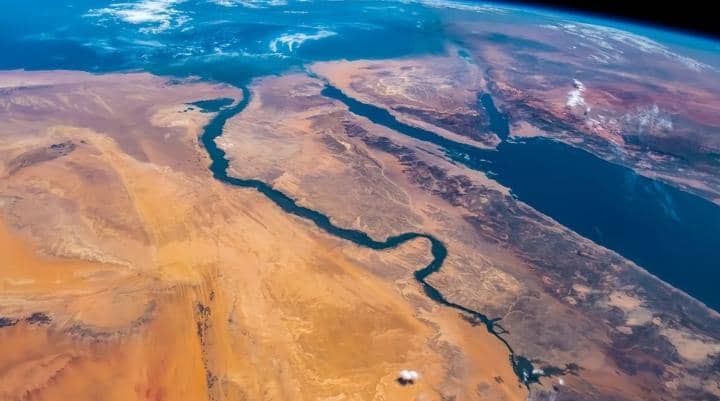The Nile River, the longest river in the world, has been the lifeblood of ancient civilizations for millennia.
Originating from the rivers flowing into Lake Victoria in East Africa, the Nile stretches over 6,600 kilometers (4,100 miles) before emptying into the Mediterranean Sea in northern Egypt.
The Nile has a rich and complex geological history, with several earlier phases dating back millions of years. The existing Nile first flowed during the former parts of the Würm glaciation period.
Satellite imagery has revealed dry watercourses in the desert west of the Nile, representing an ancient canyon filled with surface drift that transported clastic sediments to the Mediterranean during the late-Miocene period.
The Nile’s unique north-to-south flow and its flooding during the warmest time of the year were mysteries to the ancient Egyptians and Greeks. The ancient Egyptians called the river “Ar” or “Aur” (Coptic: “Iaro”), meaning “Black,” in reference to the color of the sediments carried by the river during floods.
The name “Nile” is derived from the Greek “Neilos” (Latin: “Nilus”), which likely originated from the Semitic root “naḥal,” meaning a valley or river valley.
The Nile River basin, covering about one-tenth of Africa’s area, served as the stage for the evolution and decay of advanced civilizations in the ancient world. The availability of water from the Nile throughout the year, combined with the region’s high temperatures, made possible intensive cultivation along its banks.
Ancient Egyptians developed irrigation methods to increase the amount of land used for crops and support a thriving population.
The Nile River was critical to the development of ancient Egypt. The soil of the Nile River delta between Cairo and the Mediterranean Sea is rich in nutrients due to the large silt deposits left behind as the river flows into the sea.
The banks of the Nile all along its vast length contain rich soil as well, thanks to annual flooding that deposits silt.
Today, the Nile continues to serve as a vital source of irrigation, transportation, and trade for the countries it flows through. However, the construction of dams, such as the Aswan High Dam in Egypt, has altered the natural flow of the river and affected the ecosystem. As the world faces the challenges of climate change and population growth, the Nile remains a crucial resource for the people of northeastern Africa.

